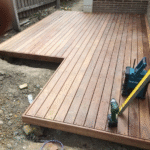Wall dampness is something that haunts every household at some point in time. This is not something that should be taken lightly, it wrecks your home. These can be due to condensation, poor quality construction materials, faulty construction, defective roof leakage, porous bricks used in construction, and lack of waterproofing measures. They cause damage like watermarks and peeling paint off the wall. And moisture due to this dampness can aid in fungal and bacterial growth. We have collected some remedies to solve this issue, as painting and applying putty won’t be enough to solve these issues.
Condensation
Condensation means the appearance of tiny drops of water on the walls and windows when the air can’t hold the moisture. This can eventually lead to wall dampness and seepage. Signs of condensation include damp patches and peeling paint. This can be fixed using a combination of ventilation and heating. This will ensure that moist air is flown outside. Also, avoid wall coverings and non-porous paints.
Rising Damp
Rising dampness occurs when moisture content from ground level travels up through the walls by capillary action, and groundwater gets sucked by tiny tubes in the bricks. This also damages wooden floors and plasterwork surrounding the affected wall. It is relatively rare, as most buildings have some barriers at the lower level of the wall to prevent water from rising up. Signs of rising dampness include damp and musty smell, discolouration, dark patches, tide marks of salt and peeling off paint. We can solve the issue with the help of a damp-proof course which can be injected into the walls. Then the effects of the rising damp can be resolved with the bond cleaning experts, they will use anti mould cleaner to clean the paster. If you are in a rented property, then getting done as earlier as possible will avoid additional risk during bond cleaning.
Penetrating Damp
This is the opposite of the rising damp, this allows the penetration of water down into the ground area wall of a building through the walls and roof. This is caused because of missing roof tiles, faulty fittings and roof. If left unattended this can cause problems for the structural integrity of your home. This can form isolated patches or can affect the whole wall. And mold will start growing in these patches. This can be solved by applying a physical membrane or chemical water repellant. To prevent this from happening check the roofs regularly.
Leaks
Leaks on water pipes can cause wall dampness. Check all the water pipes on a regular basis. Contact a plumber if the pipes need fixing. The most common source of a leak is a non-structural wall crack, then simply use sodium bentonite clay to seal the crack.
Poor Roofing
Flat roofs and roofs with inadequate slopes can cause wall dampness. Ensure your terrace has an ideal slope that prevents water logging after rain. You can also rely on terrace waterproofing, that is painting your roof with damp-proof paint.




